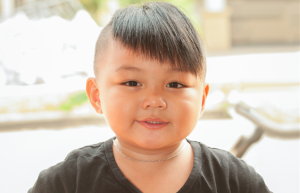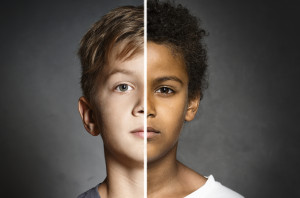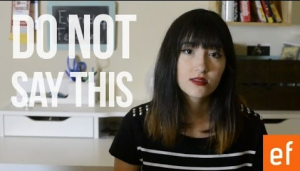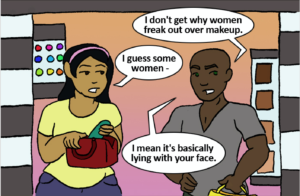I’m someone who navigates the world with candy-colored hair.
Over the years, it’s been fire engine red, Barney purple, electric blue, hot pink, bright teal, and combinations of all of the above.
I’m also someone who happens to have a child.
One of the questions I get asked frequently (usually by strangers, but that’s an entirely different piece) is, “What will you tell your kid if they come home one day and says they want to dye their hair like yours? Will you let them?”
My answer to that question is always immediate: “Unequivocally, yes.”
For me, it’s not a hard question to answer. It boils down to the fact that, as a feminist, I believe in bodily autonomy – not just for me, but for everyone.
And that includes my kid.
Not only that, but my feminism means that I also believe that consent should be the cornerstone of every interaction – and, again, that includes interactions I have with my child.
But wait—how does bodily autonomy and consent apply to children if we’re not talking about sex?
Well, bodily integrity “emphasizes the importance of personal autonomy and the self-determination of human beings over their own bodies.”
Put simply, that means that people should be able to make choices about what happens to their bodies and when.
Bodily autonomy applies to lots of things: sex, abortion, plastic surgery, tattoos and piercings – the list goes on.
If, as feminists, we truly believe in bodily autonomy and the tenet of “my body, my choice,” that should apply to children, too.
That means allowing them to make decisions about having their ears pierced, having their penis circumcised, hugging or touching other people, and, yes, cutting their hair.
In order to make these decisions for themselves, a child has to be able to consent to them. And in order to give consent, that child must be able to understand what is being done to them and why.
Before you take your child for their first haircut, ask yourself, “Can my child consent to this action?” If the answer is no, you might want to reconsider the decision.
A good follow up question to ask yourself is, “Why do I want my child to have this haircut?” Examining your own motives can be helpful in helping you rethink a decision you feel compelled to make for your kid.
If you’ve never thought about why letting your child make their own decisions about their haircut is important, here are some reasons why it might be a good idea to encourage it.
1. It Gives Them Ownership of Their Bodies
As long as it’s not a medical decision that involves a child’s actual safety, it can be empowering for children to make choices about their own bodies.
When we make those decisions for them, we send the message that other people have a right to decide what happens to their body, even if that’s not the message we intend to send.
Giving them control over what happens to their bodies gives them a valuable tool to carry with them as they get older, and may help them articulate what is and is not okay in other situations, too.
While haircuts and sex might seem completely unrelated, they’re actually not.
The same child that is given ownership of their body when they’re young becomes the young adult that asserts ownership of their body when they’re with a partner.
Take a page from Will and Jada Pinkett Smith on this one: “We let Willow cut her hair… If I teach her that I’m in charge of whether or not she can touch her hair, she’s going to replace me with some other man when she goes out in the world. She can’t cut my hair, but that’s her hair. She has got to have command of her body.”
For our family, that means we don’t intend to take our kid to have their hair cut until they ask.
We want to send the message to our child that it’s their body and therefore their choice what happens to it – and we want that message to start from day one.
That means not cutting their hair until they want it cut.
2. It Allows Them to Choose Their Gender Expression
In our society, children are put into boxes based on their genitalia from the time they’re born.
These boxes include what they should be interested in, how they should like to dress, and what hairstyles are appropriate for their gender.
The problem with this is that it’s cisnormative: It reinforces harmful gender roles and doesn’t take into account the range of gender identities and gender expressions that exist in the world.
For example, I identify as a cisgender woman, but my gender expression includes short hair, minimal makeup, and unshaved body hair – all things that might be typically associated with men.
But as an adult, I have the ability to make choices about the way I express my gender. And children deserve the same ability.
Giving your child the agency to make choices over their own hair also allows them agency over their gender expression.
When you police their hair choices, you also police their gender. You may be forcing your child into a box that they don’t fit in, and that can have long-lasting and harmful consequences.
Their gender expression may change over the years. In fact, it almost certainly will.
But what’s important is that they have control over those changes and that their gender expression feels true to who they are, not who you want them to be.
3. It Teaches Them That Their Wishes Should Be Respected (And That Their Desires Are Valid)
How often do kids say things like, “I want to play with the Black Power Ranger!” only to be told, “No, you don’t. Here, take the Pink one instead.” Or maybe they say, “I love this blue dress. It’s my favorite,” and an adult replies, “Are you sure? You don’t like the purple one better?”
Day in and day out, kids have their desires questioned. They’re told they don’t know what they’re talking about, that they’re just young and don’t know any better yet.
And, I’m sorry, but that’s crap.
Adults spend a lot of time and energy telling kids that they don’t know anything or what they want is invalid. This kind of messaging is what leads to kids who don’t trust themselves or feel shame about the things they want or feel.
So what if it’s on a whim or you think they’ll regret it? Hair is hair, after all. Haircuts are temporary; it grows back. Hair color isn’t permanent; it can always be dyed again.
Let them make their own mistakes. It’s the only way they’ll learn.
When we give kids the power to say “I want to cut my hair like Demi Lovato’s” and have that desire respected, they learn that what they want is okay.
4. It Helps Them Develop a Sense of Self (And Encourages Their Independence)
Developing a unique sense of style separate from your parents’ is part of forming independence.
For years, I wasn’t allowed to dye my hair the colors that I wanted because my mother wouldn’t let me. Even as an adult, she feared that the things I did with my hair would affect the way that people viewed her.
But she and I are two separate people. The decisions that I make about my hair reflect on no one but myself – because I am my own person.
What your child does with their hair reflects on who they are. What they do with that hair allows them to develop an independence from you. And when you support that independence, you also support them as people.
You send them the message that what matters to you is that they are true to who they are, regardless of what other people think.
Allowing them the agency to make choices about their haircut helps them build a strong sense of self that is independent of both you and the outside world.
5. It Develops a Sense of Trust Between You and Your Child
When you let your kid make decisions about their body, it helps facilitate a sense of trust between the two of you. You send the message to your child that you trust them to know themselves, that they are the expert on themselves.
In turn, your kid knows that you trust them, which helps them to trust you.
It means that when you suggest that they not do something, they are more likely to listen because they know that you wouldn’t tell them not to do something unless it was really not in their best interest.
It facilitates you “choosing your battles,” as a parent, and saves the Big Deal for things that really are one. If you trust them, they will trust you in return. And allowing them to decide what new hairdo to rock is one way to build that trust.
6. It Supports a Culture of Unconditional Love in Your Home and/or Relationship
When you let your child decide what they look like on the outside, you send the message to them that you love them regardless. It lets them know that you love them with short hair or long hair, red hair or blue hair, brown hair or blonde hair.
You are telling them that, no matter what they look like on the outside, you love and accept them just the same.
This radical expression of unconditional love creates an environment of support for a child, and one that encourages them to be themselves without fear.
It helps your child to feel like they can tell you anything, and that they don’t have to hide themselves from you, because they know that you’ll love them no matter what.
***
Giving a child the ability to make decisions about their haircut and style may seem like a small thing. And maybe it is. But it’s a small thing that has big implications for the way kids view themselves.
In giving them the agency to choose their own outward appearance, you help instill values that they can carry with them throughout their life.
It’s more than just hair – it’s an early lesson in autonomy, consent, and trust.
[do_widget id=’text-101′]
Britni de la Cretaz is a Feature Writer for Everyday Feminism. She is a feminist momma, community organizer, freelance writer, and recovered alcoholic living in Boston. She’s a founding member of Safe Hub Collective. Follow her on Twitter at @britnidlc. Read her articles here.
Search our 3000+ articles!
Read our articles about:
Our online racial justice training
Used by hundreds of universities, non-profits, and businesses.
Click to learn more





















